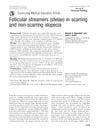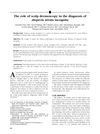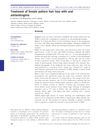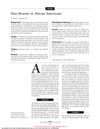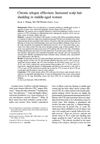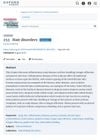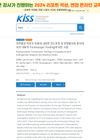Follicular Density and Ratios in Scarring and Nonscarring Alopecia
February 2013
in “
The American Journal of Dermatopathology
”
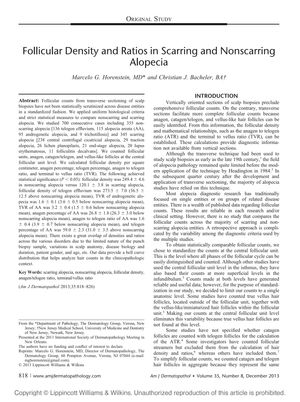
TLDR Nonscarring alopecia has higher hair density than scarring alopecia, and hair density can help diagnose the type of alopecia.
The study by Horenstein and Bacheler analyzed 700 cases of alopecia to compare follicular densities and ratios between nonscarring and scarring types. It included 355 cases of nonscarring alopecia and 345 cases of scarring alopecia, with the most common being central centrifugal cicatricial alopecia and telogen effluvium. The study found that nonscarring alopecia had a significantly higher follicular density (249.4 ± 4.6 follicles per cm²) compared to scarring alopecia (120.1 ± 3.8 follicles per cm²). Telogen effluvium had the highest density among nonscarring alopecias, while end-stage alopecia had the lowest in the scarring group. The study concluded that follicular density is a useful diagnostic tool, with low density supporting a diagnosis of scarring alopecia and high density favoring telogen effluvium over other nonscarring types. However, the study also noted that while certain ratios may indicate specific types of alopecia, they must be interpreted with caution due to variability from multiple factors. The sample sizes for measurements varied, affecting the strength of the study's conclusions.



